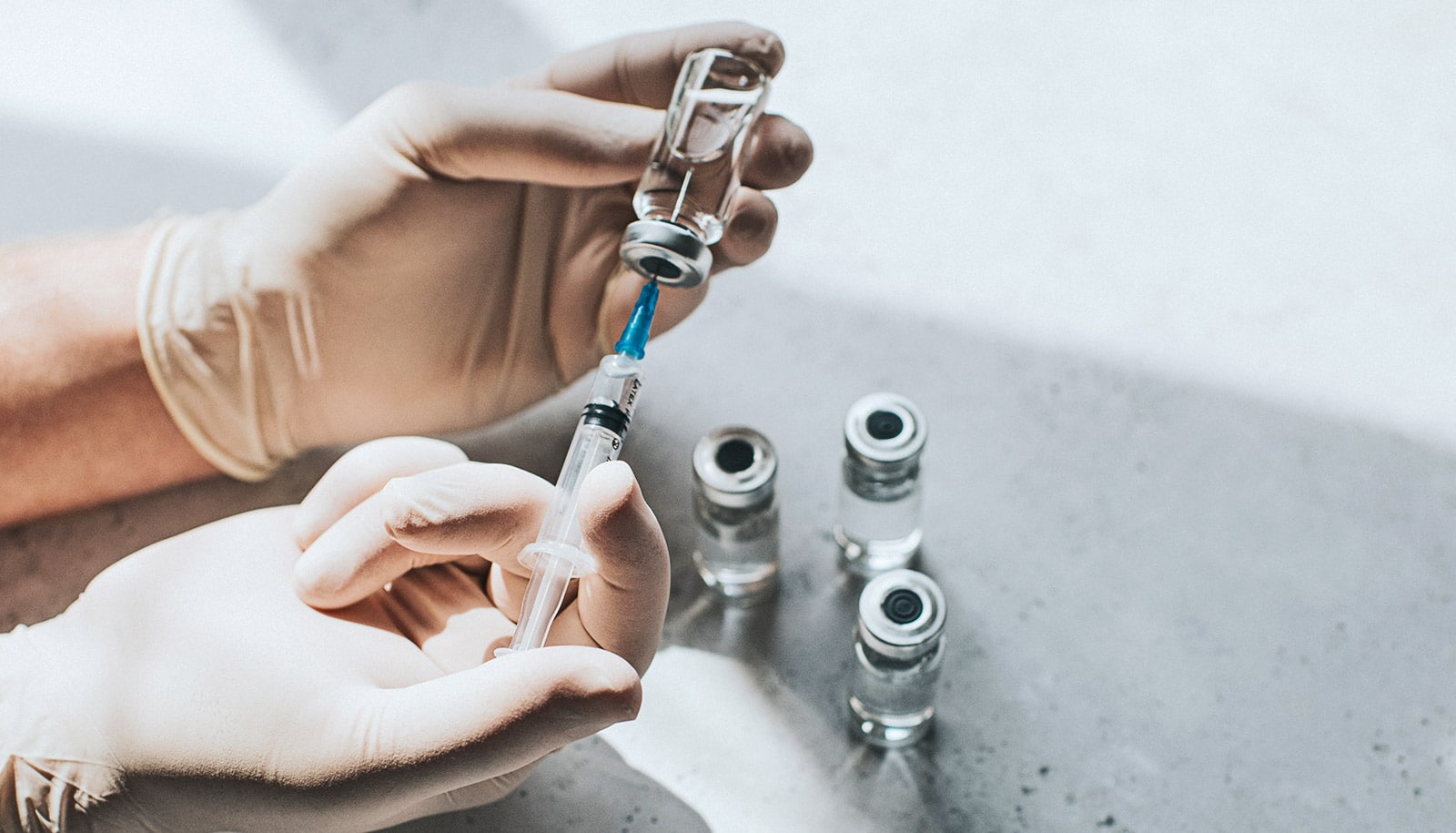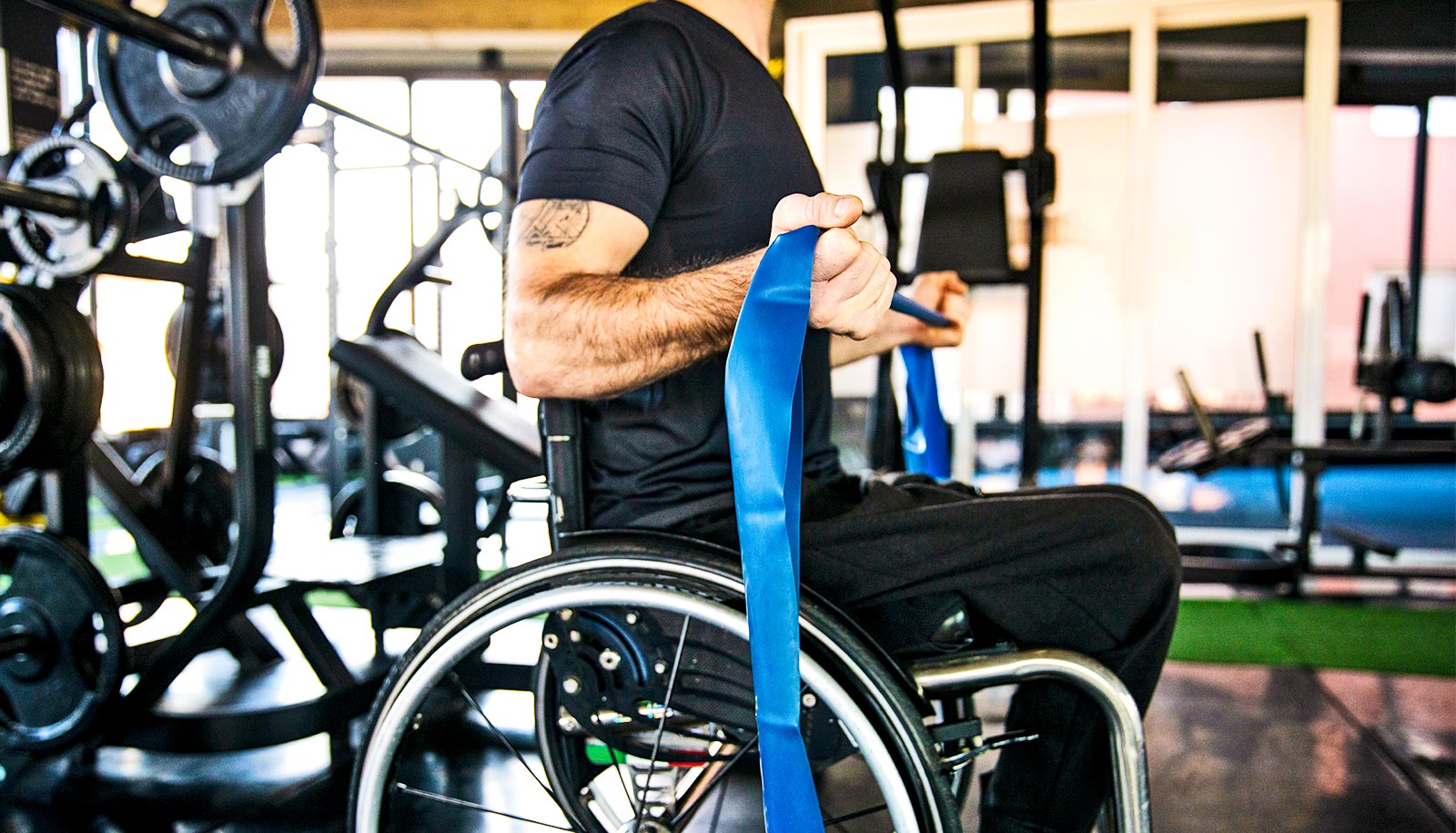A new antibody test only takes 10 minutes and doesn’t require a blood draw.
The wearable biosensors can detect antibodies associated with infectious pathogens such as SARS-CoV-2 and influenza viruses.
The sensors are orders of magnitude more sensitive than existing tests, use only a half volt of electricity and can return results in just 10 minutes.
Their research appears the journal Analytical Chemistry.
Alexander Star, professor in the University of Pittsburgh’s chemistry department, has already developed sensors using a similar platform to detect, among other substances, marijuana and fentanyl.
Unlike a traditional antibody screen that requires blood drawing, time, and resource-inefficient laboratory tests, Star’s sensors detect antibodies in the interstitial fluid, a liquid surrounding human skin cells that contains many of the same proteins found in blood.
“You can use this as a way to detect a viral infection,” he says, “but it can also be used to monitor how effective a vaccination is because antibodies are a way by which your body is fighting a viral infection.”
People’s immune systems are alerted to viral infections via viral antigens, molecules on the surface of the virus. To fight the intruder, the body releases antibodies, proteins designed to fight that specific virus. Over time, those antibodies fade.
In practice, people’s immune systems behave differently. After receiving a vaccine, which exposes the immune system to target antigens, one person may continue to produce antibodies for longer than another. Therefore, a booster might not benefit the first person but could be necessary to ensure the second person can fight off infection. The clearest way to know is to take an antibody test.
“Typically, the way that’s done today is you take a blood sample, you send it to the lab, they do an assay and then you get the results back maybe a day later,” says Stephen Balmert, a research scientist in the School of Medicine’s dermatology department.
“One of the advantages with these sensors is the idea of point-of-care diagnostics,” he adds. “You can apply them, you can take a sample and you can get the results almost instantaneously”—no complex lab infrastructure required.
The chemistry team, including first author Amir Amiri, a graduate student in Star’s lab, designed two sensors—one to detect SARS-CoV-2-specific antibodies, which is responsible for COVID-19, and another to detect H1N1-specific antibodies, responsible for influenza A—by using the virus’ antigens as a lure and attaching them to carbon nanotubes, which are 100,000 times smaller than a human hair and have high electrical conductivity. An H1N1 antibody, for example, will quickly and tightly bind to a H1N1 antigen, indicating its presence by altering the electrical properties of the nanotubes.
Testing by a team in Pitt Medicine’s dermatology department found Star’s sensors are nine orders of magnitude more sensitive than tests more commonly used in clinical labs, such as ELISA.
“That means they can cover both trace amounts of antibodies and clinically relevant concentrations,” Star says.
Beyond a one-time measurement, the sensors could be developed as continuous monitors for people with chronic conditions, similar to continuous glucose monitors used today by some people with Type 2 diabetes.
“We are working on these concepts with Dr. Star to try to find better ways to monitor antibody levels associated with infections or induced by our vaccines,” says Ashish Dhayani, a postdoctoral research associate whose work involves the use of microneedle arrays, painless patches consisting of less than a millimeter long needles to penetrate the skin. Often, these arrays are developed as a dissolvable drug delivery system—a patch instead of an injection—but they can also be engineered as a platform to collect interstitial fluid to gather biological information, such as the detection of antibodies. They’re a fitting match for Star’s tiny sensors, which are just 2.6 square millimeters.
“Real-time monitoring would really help us with the personalized treatment of a lot of different diseases,” says Louis D. Falo Jr., chair and professor in the dermatology department.
Treatments for many autoimmune conditions, even some cancers, involve taking therapeutic antibodies. Dosing schedules are determined by analyzing population-level efficacy, but as with vaccine responses, people’s immune systems behave differently. Continuous monitoring would allow for personalized treatment schedules.
“If you see that the antibodies are starting to wane—and they might decrease before you actually show any symptoms—you might be able to re-dose accordingly,” Balmert, the research scientist, says. Similar biosensors might be able to detect exposure to allergens, or even bacterial or other infections, all of which are recognized by their antigens.
Because of its high selectivity thanks to the use of antigens and superior sensitivity, there are a host of potential applications for Star’s biosensor platform. Paired with a microneedle array, it could prove to be a marked improvement over current biosensing methods used in the clinic.
“You put a microneedle array patch on your skin,” Star says, “it doesn’t penetrate too deeply, so it only reaches the interstitial fluid. It’s not painful because it’s not touching any nerves. And you get the same results in less time. There’s no nose swab and you are not losing any blood.”
Source: University of Pittsburgh



